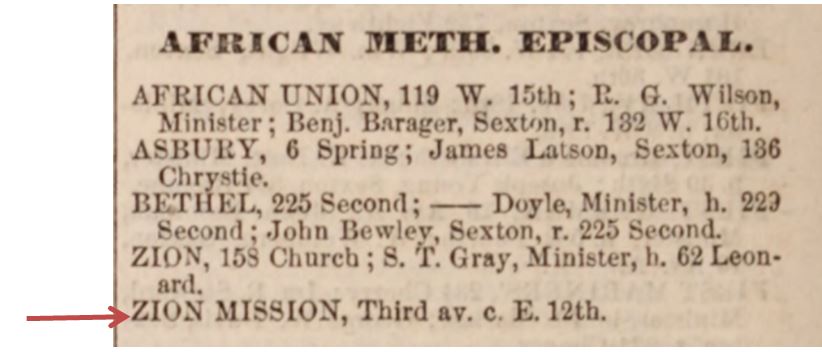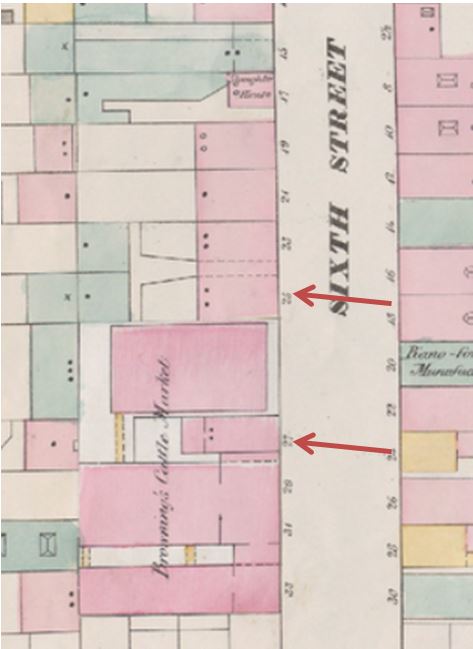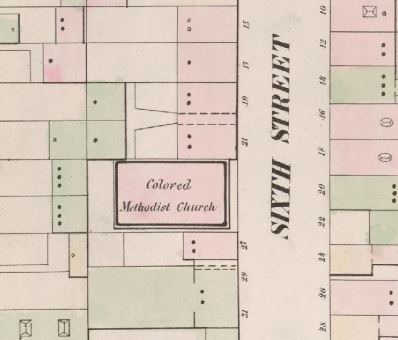New Evidence of 19th Century African American Life in Our Neighborhoods
You never know what you may find when doing historic research in our neighborhoods, and it often raises more questions than it answers. I was recently looking into the history of a building on Fourth Avenue as part of our campaign to landmark the area south of Union Square. While scanning New York City Directories via the NY Public Library looking for information about it, I came across this in the 1859-60 directory:

Greenwich Village has a long history as a home to African Americans, as free blacks were actually the first non-native settlers of the area, and in the mid-to-late 19th century its “Little Africa” community was the largest African American community in the city. But finding evidence of a significant African American presence in the East Village in the mid-19th century was exciting and in many ways new. While the first non-native settlers of the East Village were also free blacks, the East Village was not known to have the same large African American community in the 19th century as Greenwich Village.
But this revelation about Zion AME church might be changing that understanding. The history of Mother AME Zion Church, now located on West 137th Street, stretches back to the late 18th century. Incorporated in 1801, Mother Zion moved several times over the course of its existence. One of its longest stays prior to its move to its current Harlem location was at 215 Bleecker Street at West 10th Street in Greenwich Village, to which it arrived in 1864, just a short while after this directory was published. According to From Abyssinian to Zion, A Guide to Manhattan’s House of Worship by David Dunlap, Mother Zion built a church in 1853 for a small congregation in Senaca Village, located in what is now Central Park around 82nd Street. Another uptown branch of the church was created 1843, referred to as Little Zion. Established New York City churches would sometimes set up missions to test the waters and see if an area was an appropriate location for the church without having to move the established church. And that might have been what Mother Zion was doing opening this mission in 1859 in what we today call the East Village, near Third Avenue and 12th Street (coincidentally just around the corner from Village Preservation’s offices).

This was exciting and new news to me. So I kept digging. The 1858-59 directory showed Zion AME with a mission at 25 Sixth Street, which today would be East 6th Street between the Bowery/Cooper Square and Second Avenue, also in the East Village and not far from the 1859-60 location of the mission:

The 1860-61 directory showed the mission at 27 Sixth Street, which today would also be East 6th Street between the Bowery/Cooper Square and Second Avenue:

The directories before and after this span of years, 1858-1861, do not list a Zion Mission. However, now I had three locations to look into. For the first, at the corner of Third Avenue and 12th Street, the directory unfortunately did not provide a street number, and we have as yet been unable to find an exact address (some other sources refer to it being near 3rd Avenue and 11th Street). There is one still-extant building at the corner of 3rd Avenue and 12th Street which dates to the 1830s and therefore conceivably could have held the mission, No. 139 East 12th Street. We may never know if that was in fact the location of the mission, but it remains a possibility.

Before and after being listed at the corner of Third Avenue and 12th Street, the Zion Mission was listed at No. 25 and No. 27 Sixth Street. So the next stop in our research journey was to look at the historic NYC maps which are available online through the New York Public Library. Here is the 1859 Perris map:

Both buildings were second class masonry dwellings (No. 27, oddly enough is in the middle of a cattle market). Interestingly, an earlier map, published in 1853, shows an African American methodist church, the First Methodist Congregational Colored Church, at 23-25 East 6th Street (today’s 228 East 6th Street) at this location, the same one that Elizabeth Jennings Graham was traveling to when in 1854 she famously challenged the segregation of New York City’s transportation system. It seems by 1859, the former church was no longer being used in its earlier capacity.


Three different locations for the Zion AME church mission in the East Village would seem to indicate a strong interest in the area by New York’s first African American church at that time. And while we know two of the locations are certainly no longer extant — those at what was then 25 and 27 Sixth Street, now near and at 228 East 6th Street — there’s at least a chance that the one near Third Avenue and 12th Street still is. Given that there is so little physical evidence remaining of the African American presence from our neighborhoods in the 19th century still left — almost every church and other institution was destroyed, as was much of the housing — even this slim possibility of a physical connection to this historic and pioneering African American institution in our neighborhood is exciting. As is the evidence of a perhaps larger African American presence in the East Village in the 19th century than previously understood.
More research, and possibly more news, to come!

Rev. J. C. Beeman (aka Jehiel C. Beman), the minister listed in the 1859 directory, died in December 1858. He was a prominent abolitionist and speaker from Connecticut.